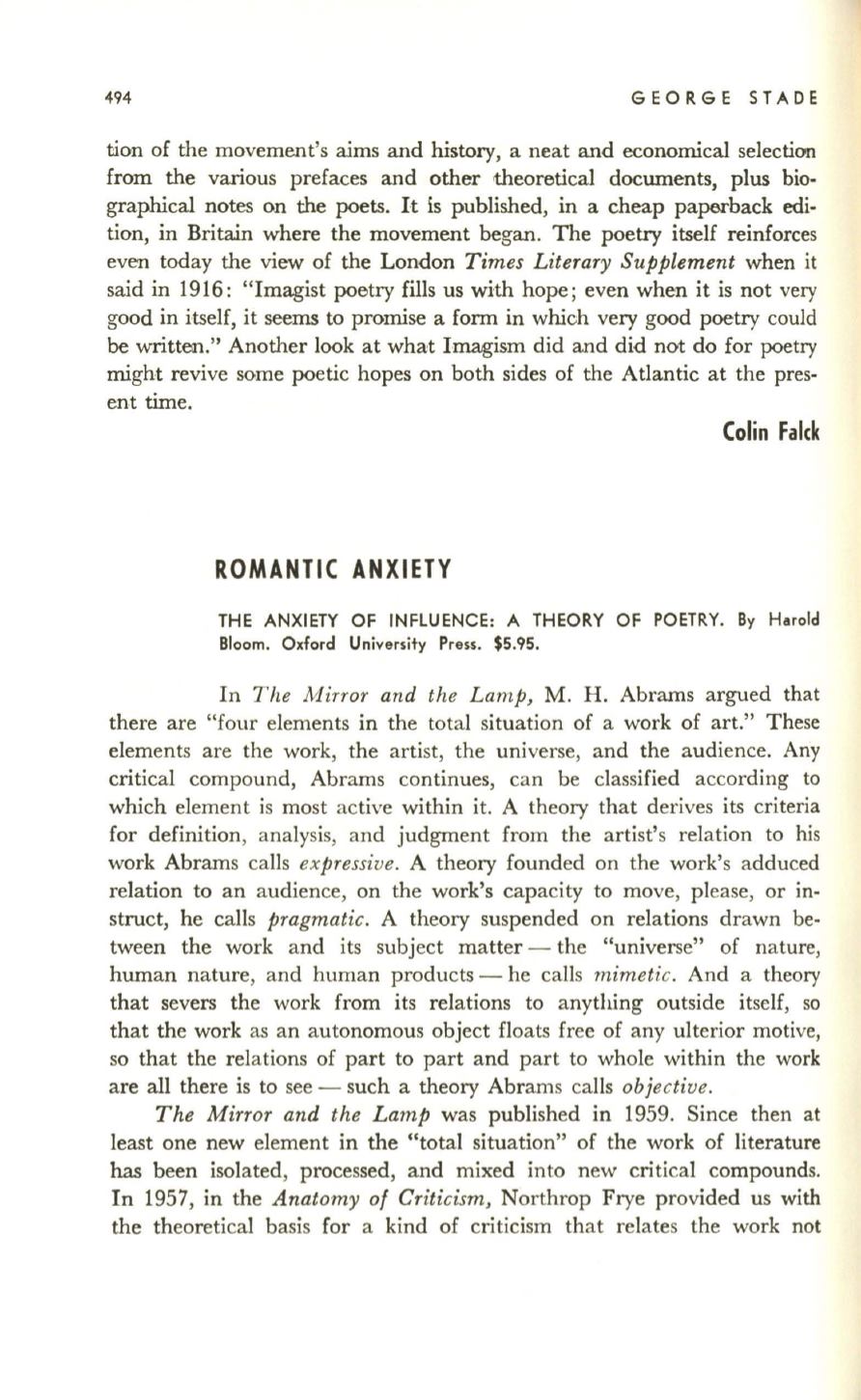
494
GEORGE STADE
t:ion of the movement's aims and history, a neat and economical selection
from the various prefaces and other theoretical documents, plus bio–
graphical notes on the poets. It is published, in a cheap paperback edi–
tion, in Britain where the movement began. The poetry itself reinforces
even today the
view
of the London
Times Literary Supplement
when it
said in 1916: "Imagist poetry fills us with hope; even when it is not very
good in itself, it seems to promise a form in which very good poetry could
be
written." Another look at what Imagism did and did not do for poetry
might revive some poetic hopes on both sides of the Atlantic at the pres–
ent time.
Colin Falck
ROMANTIC ANXIETY
THE ANXIETY OF INFLUENCE: A THEORY OF POETRY. By Harold
Bloom. Oxford University Press. $5.95.
In
The Mirror and the Lamp,
M. H. Abrams argued that
there are "four elements in the total situation of a work of art." These
elements are the work, the artist, the universe, and the audience. Any
critical compound, Abrams continues, can be classified according to
which element is most active within it. A theory that derives its criteria
for definition, analysis, and judgment from the artist's relation to his
work Abrams calls
expressive.
A theory founded on the work's adduced
relation to an audience, on the work's capacity to move, please, or in–
struct, he calls
pragmatic.
A theory suspended on relations drawn be–
tween the work and its subject matter - the "universe" of nature,
human nature, and human products - he calls
mimetic.
And a theory
that severs the work from its relations to anything outside itself, so
that the work as an autonomous object floats free of any ulterior motive,
so that the relations of part to part and part to whole within the work
are all there is to see - such a theory Abrams calls
objective.
The Mirror and the Lamp
was published in 1959. Since then at
least one new element in the "total situation" of the work of literature
has
been isolated, processed, and mixed into new critical compounds.
In 1957, in the
Anatomy of Criticism,
Northrop Frye provided us with
the theoretical basis for a kind of criticism that relates the work not


